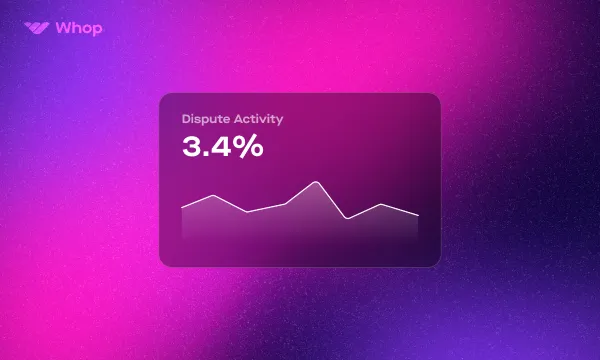Disputes are an unfortunate reality of business, and it’s impossible to prevent them from cropping up entirely. Many business owners choose to get on top of them instead, adopting practices to bring their company dispute rates down whilst also learning how to best handle disputes.
This guide will take you through what disputes are, and why it’s important to bring your company dispute rate down in order to keep your business running as smoothly as possible.
What is a Dispute? 🤔
A dispute occurs when a customer encounters an issue with a transaction and contacts either their payment provider or you, their merchant, in order to clarify and resolve the situation.
- Disputes themselves can crop up for a myriad of reasons, many of them preventable or manageable. Billing discrepancy or confusion, for example, is something you can get ahead of easily—if you find a customer initiating a dispute because they don’t recognize the charges, you can improve your billing description to prevent this from happening again.
- Customers may also raise disputes due to misunderstandings about product details or terms of service, as well as delivery issues such as non-delivery and delivery delays. Unauthorized transactions due to card information being compromised are a possibility too.
If the customer contacts you directly, this generally positive, since you have the opportunity to provide a resolution in a positive manner. In fact, disputes can be valuable learning experiences, both in terms of customer service and satisfaction, but also in terms of improving processes and spotting room for improvement.
However, if on the other hand the customer contacts their payment provider directly, the provider may choose to investigate the claim. To do this, the provider seeks information both from the customer and merchant. This can lead to the funds under dispute being frozen for the duration of the investigation, and the fees resulting from the entire process can hit you hard.
Chargebacks and Refunds 💸
Though chargebacks and refunds both involve the return of money, they are not the same thing.
A refund is arranged directly between you and your customer, while a chargeback engages the entire payment system, and so can become much more expensive than a refund.
Dispute Activity vs. Dispute Rate 📈
Many companies measure their disputes. They do so in one of two ways - “dispute activity” is the percentage of disputes on successful payments by dispute date, while “dispute rate” is the percentage of disputes on successful payments by charge date.
This differentiation is important because most disputes don’t come in immediately following payment. Customers have a significant time window in which they may raise a dispute. So, although you can have a lot of disputes in a given month, only a few of these may be from payments processed in that same month.
Why does this matter? Well, card networks like Visa and Mastercard frown on disputes as charge backs add to the strain on their payment networks. As a result, these companies set thresholds on both the volume of disputes you receive, and the rate at which they come in.
Excessive Dispute Activity ⚠️
Even if you are not monitoring dispute activity, major payment networks are. One such monitoring program is the Visa Dispute Monitoring Program (VDMP), which tracks vendor's company dispute rates. Visa also has early warning systems to warn users who may be on the verge of getting placed into their monitoring programs.
For example, let's say that you hit a total of 75 disputes in a 3 month period at a rate of 0.65%. At this point, VDMP may send you an early warning of your high dispute rate. If your dispute rate reaches 0.9%, you could then be liable to pay fines per dispute until you get that number back down.
If you receive thousands of disputes across that 3 month tracking period and reach a 1.8% company dispute rate, VDMP labels your dispute activity as excessive. This can open you up to a $25,000 review fee if you’re a non-EU merchant. Also, if these numbers continue to stay elevated, you may be disqualified from using Visa services.
It's clear that disputes are not to be ignored. All of these fees and fines can devastate your business, as can being denied Visa services. So, keeping your company dispute rate down is crucial.
What Whop Can Do For You 🤝
In order to stay on top of your company dispute rate - not just in terms of monitoring disputes but also preventing them - familiarize yourself with the Whop Resolution Center. This resource facilitates charge disagreements between you and your customers and can solve cases before card chargebacks happen and payment providers get involved.
Also, take a look at the Whop Dispute Fighter, a tool built especially for these situations. Dispute Fighter uploads customer access logs, your unique TOS and refund policy, and all other relevant information that’ll help you make your case in case of a dispute.
Key Takeaways
Disputes are a reality of doing business, but they can seriously harm your company if you let them get out of hand. Monitoring your company dispute rate and staying within the thresholds set by payment providers like Visa and Mastercard isn’t just a good idea, it can save you from a debilitating fee and fine regime if you fall afoul of their requirements.
👉 Whop’s Resolution Center can help you deal with disputes before they involve the payment providers, keeping your company dispute rate down and well within requirements.





